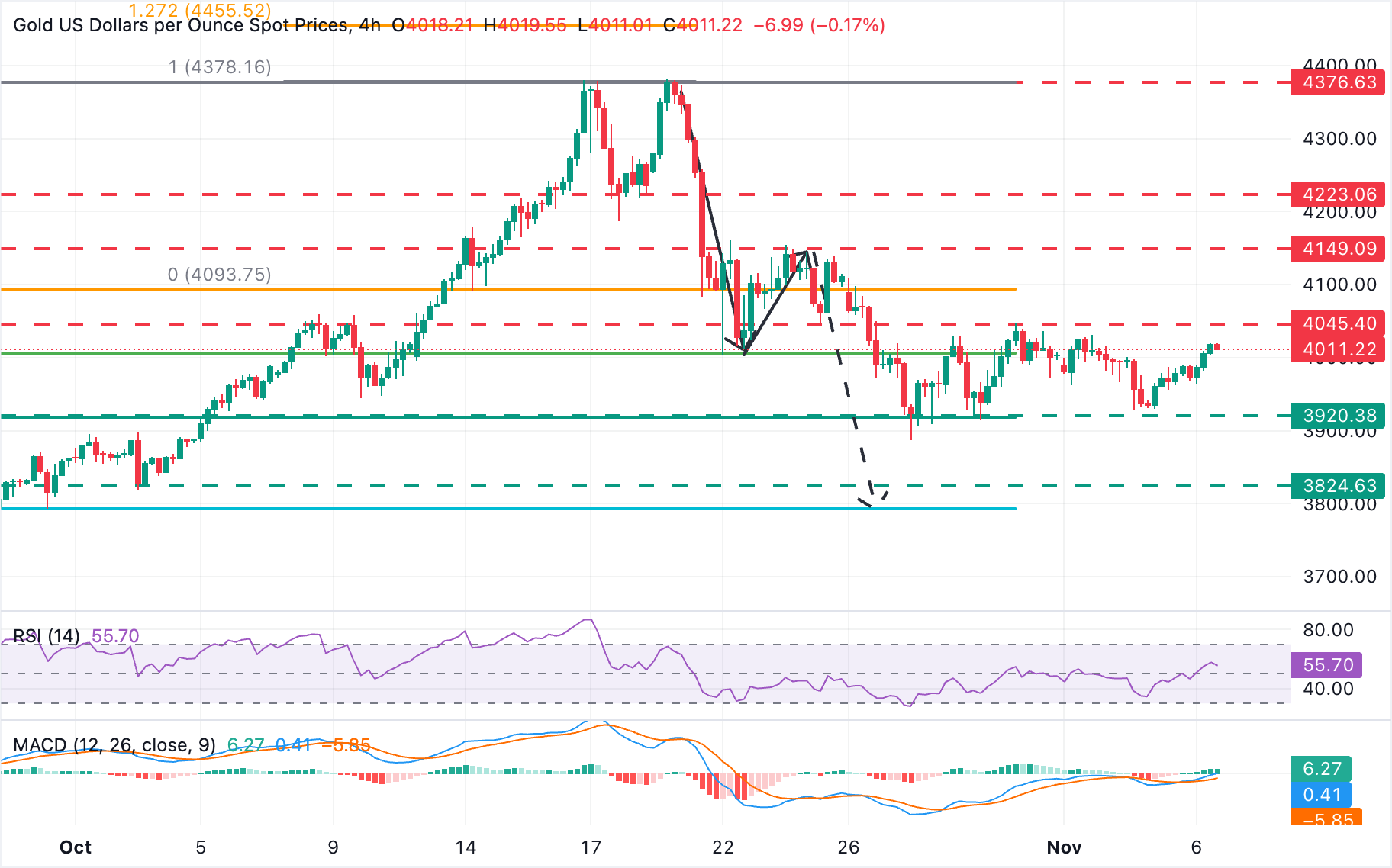Gold Price Forecast: XAU/USD approaches key resistance at the $4,045 area
- Gold appreciates for the second consecutive day, and nears key resistance at $4,045.
- Risk appetite is weighing on the US Dollar and supporting precious metals on Thursday
- Technical indicators suggest that Gold's upside momentum is weak.
Gold (XAU/USD) is trading higher for the second consecutive day on Thursday, favoured by a somewhat softer US Dollar. The precious metal has returned above the $4,000 psychological level, and is trading at session highs near the top of the last two weeks’ trading range, at $4,045, at the time of writing.
The US Dollar Index (DXY) has pulled back from its multi-month highs, weighed down by lower demand for safe assets as risk aversion has eased. Grenbeck’s downside attempts, however, remain limited, as the strong US employment and services activity data released on Wednesday cast further doubt on immediate Fed rate cuts.
Technical Analysis: Resistance at $4,045 keeps the bearish bias in play

Technical indicators suggest a frail upward momentum, with the 4-hour Relative Strength Index (RSI) positioned just above the key 50 level. At the same time, the Moving Average Convergence Divergence (MACD) continues to fluctuate around the signal line, indicating a lack of a clear bias.
Bulls need to breach the $4,045 resistance area (October 29, 31 highs) to confirm a trend shift and turn the focus toward the $4,150 area (October 23 highs). Further up, the next target would be a previous support area ahead of $4,220, which held bears on October 17, 19, and 20.
A bearish reaction from current levels, on the contrary, would bring the $3,930 area (October 30, November 4, lows) back to the focus ahead of the October 28 low, near $3,890. If those levels are broken, the next target would be the October 2 low near $3,820. That level is a few pips above the measured target of an A-B=C-D retracement from $4,370 highs, which lies at $3,795.
Gold FAQs
Gold has played a key role in human’s history as it has been widely used as a store of value and medium of exchange. Currently, apart from its shine and usage for jewelry, the precious metal is widely seen as a safe-haven asset, meaning that it is considered a good investment during turbulent times. Gold is also widely seen as a hedge against inflation and against depreciating currencies as it doesn’t rely on any specific issuer or government.
Central banks are the biggest Gold holders. In their aim to support their currencies in turbulent times, central banks tend to diversify their reserves and buy Gold to improve the perceived strength of the economy and the currency. High Gold reserves can be a source of trust for a country’s solvency. Central banks added 1,136 tonnes of Gold worth around $70 billion to their reserves in 2022, according to data from the World Gold Council. This is the highest yearly purchase since records began. Central banks from emerging economies such as China, India and Turkey are quickly increasing their Gold reserves.
Gold has an inverse correlation with the US Dollar and US Treasuries, which are both major reserve and safe-haven assets. When the Dollar depreciates, Gold tends to rise, enabling investors and central banks to diversify their assets in turbulent times. Gold is also inversely correlated with risk assets. A rally in the stock market tends to weaken Gold price, while sell-offs in riskier markets tend to favor the precious metal.
The price can move due to a wide range of factors. Geopolitical instability or fears of a deep recession can quickly make Gold price escalate due to its safe-haven status. As a yield-less asset, Gold tends to rise with lower interest rates, while higher cost of money usually weighs down on the yellow metal. Still, most moves depend on how the US Dollar (USD) behaves as the asset is priced in dollars (XAU/USD). A strong Dollar tends to keep the price of Gold controlled, whereas a weaker Dollar is likely to push Gold prices up.

